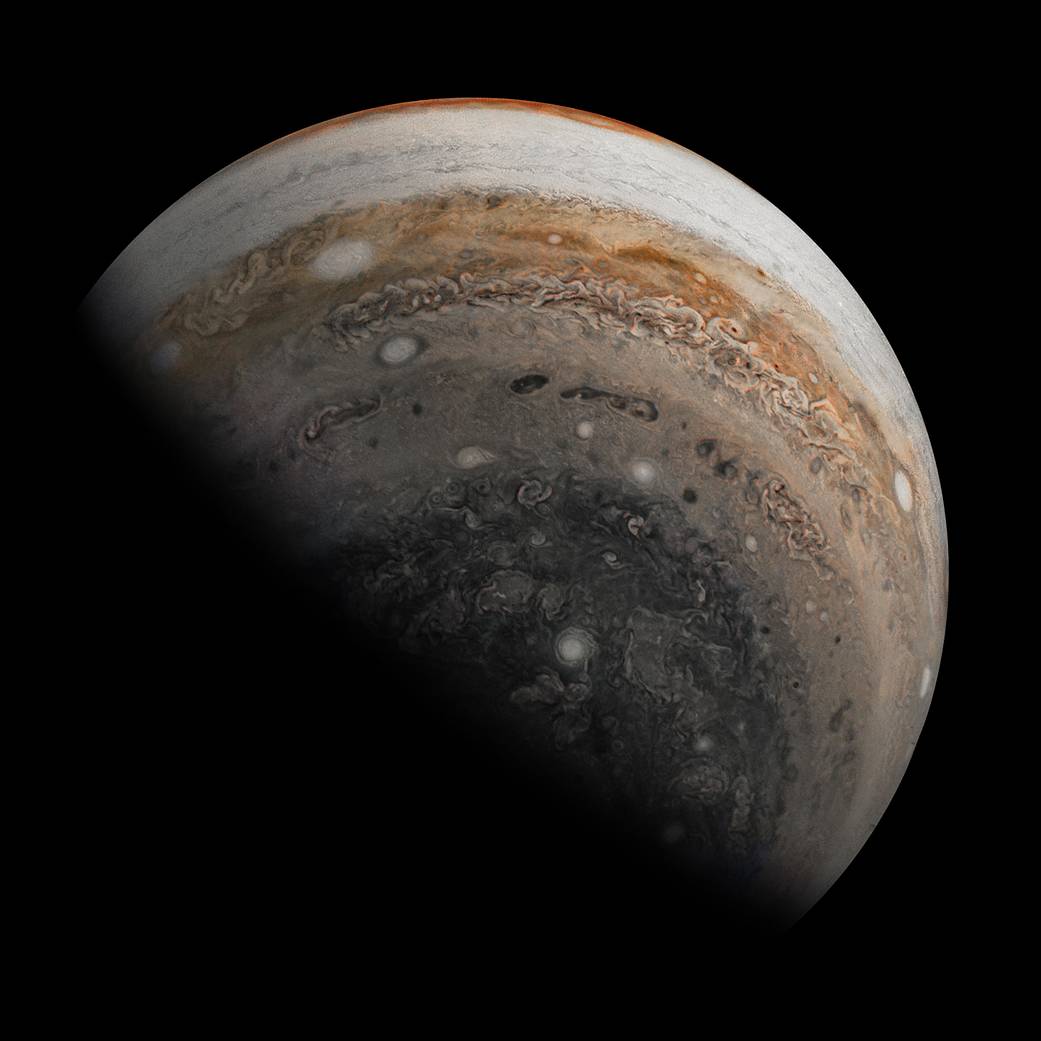Just after its close flyby of Jupiter on Nov. 3, 2019, NASA’s Juno spacecraft caught this striking view of Jupiter’s southern hemisphere as the spacecraft sped away from the giant planet. This image captures massive cyclones near Jupiter’s south pole, as well as the chaotic clouds of the folded filamentary region — the turbulent area between the orange band and the brownish polar region.
When this image was taken, Juno was traveling at about 85,000 mph (137,000 kilometers per hour) relative to the planet. A little more than an hour earlier — at the point of closest approach to the cloud tops — the spacecraft reached speeds relative to Jupiter in excess of 130,000 mph (209,000 kilometers per hour).
Citizen scientist Ali Abbasi created this image using data from the spacecraft’s JunoCam imager. It was taken on Nov. 3, 2019, at 3:29 p.m. PST (6:29 p.m. EST) as Juno performed its 23rd close flyby of Jupiter. At the time the image was taken, the spacecraft was about 65,500 miles (104,600 kilometers) from the planet at a latitude of about -70 degrees.
JunoCam’s raw images are available for the public to peruse and process into image products at
https://missionjuno.swri.edu/junocam/processing.
More information about Juno is at http://www.nasa.gov/juno and http://missionjuno.swri.edu.
Image data: NASA/JPL-Caltech/SwRI/MSSS
Image processing by AliAbbasiPov, © CC BY
2019年11月3日,美国国家航空航天局的朱诺号宇宙飞船在近距离飞越木星后,从这颗巨大的行星上疾驰而去,拍下了木星南半球的惊人景象。这张照片捕捉到了木星南极附近的巨大气旋,以及褶皱的丝状区域的混乱云团——这是介于橙色带和褐色极地区域之间的混乱区域。
拍摄这张照片时,朱诺号相对于地球以大约85,000英里/小时(每小时13.7万公里)的速度行驶。 一个多小时前-在最接近云层顶部的位置-航天器相对于木星的速度超过了130,000 mph(每小时209,000公里)。
平民科学家阿里·阿巴西使用宇宙飞船的JunoCam成像仪拍摄的数据制作了这张图片。这张照片拍摄于2019年11月3日,太平洋标准时间下午3点29分(美国东部时间下午6点29分),当时朱诺号正在第23次近距离飞越木星。在拍摄这张照片时,航天器在大约-70度的纬度上距地球约65,500英里(104,600公里)。
JunoCam的原始图像可供公众在以下位置阅读和处理成图像产品
https://missionjuno.swri.edu/junocam/processing。
有关朱诺号的更多信息,请访问http://www.nasa.gov/juno和http://missionjuno.swri.edu。







